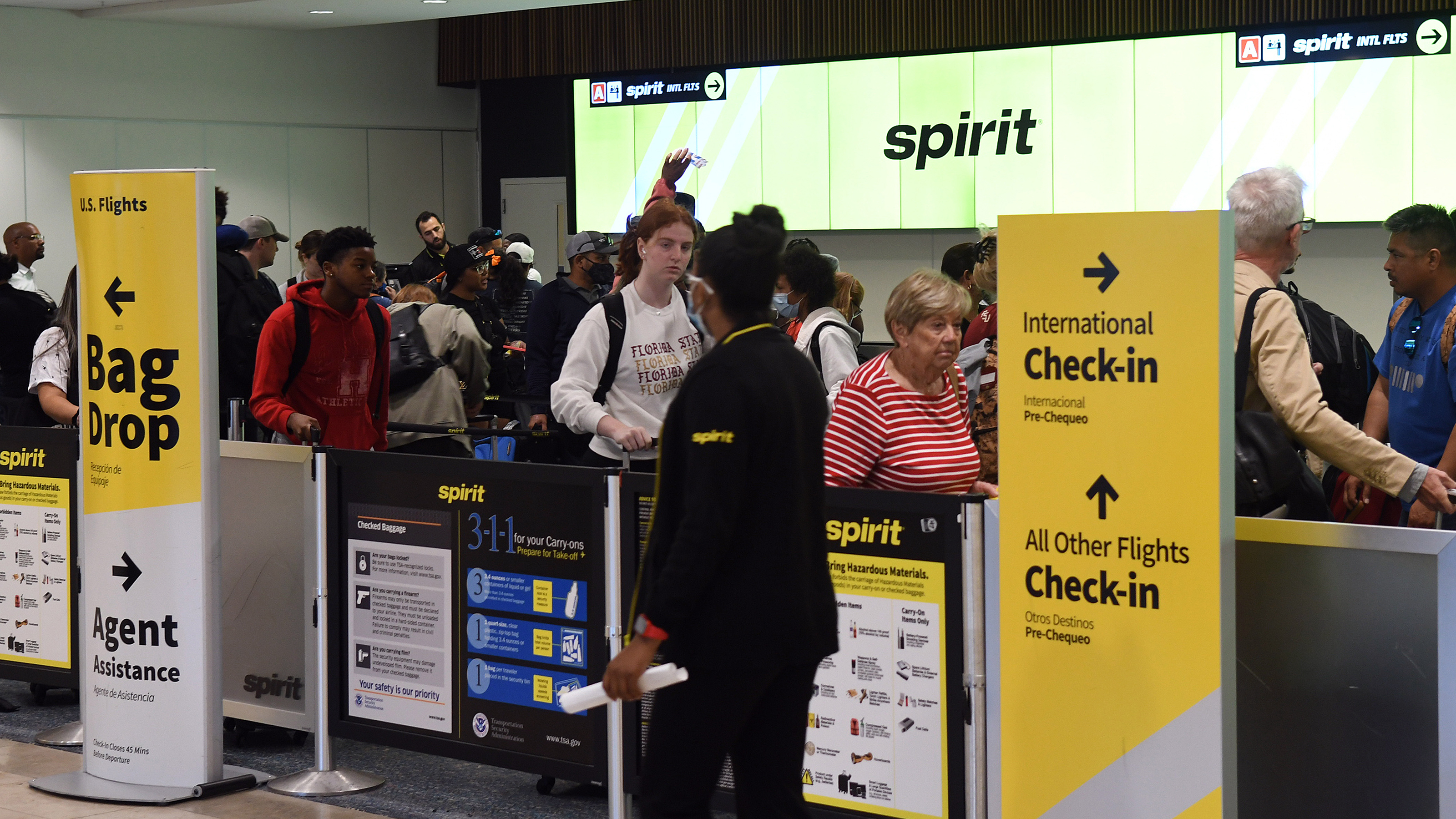
Spirit Airlines recently announced a stricter dress code for its passengers. Following a couple of recent incidents in which Spirit staff barred passengers from boarding for wearing crop tops or hoodies with swear words, the airline chose to clarify its dress code and provide additional training to staff.
According to the updated contract of carriage, passengers may not be allowed to board if they are barefoot, “inadequately clothed” or have clothing or tattoos that are “lewd, obscene or offensive.” If a passenger is barred from the plane for violating the new dress code, the contract states that they aren’t entitled to a flight refund.
This dress code may be new for Spirit, but the rules are pretty standard for the industry. You’ll find similar restrictions in the fine print for other U.S. airlines. Even if you have no plans to fly with Spirit, it’s worth brushing up on the rules to make sure you don’t run into any issues at the gate.
@nbcchicago ♬ original sound - NBC Chicago
Spirit’s new dress code is similar to existing rules on other airlines
The updated guidelines on Spirit are in line with the rules already in place on other airlines. Delta, United and American Airlines all refuse to board passengers who are barefoot, for example. All three also include some guidelines around passenger appearance.
In fact, Spirit’s new dress code is surprisingly clear compared to other major carriers. While Spirit includes detailed examples of what constitutes inadequate clothing, the rules for other airlines are decidedly vague.
American Airlines simply states that passengers must “dress appropriately” while United’s dress code bans passengers who are “not properly clothed.” Meanwhile, Delta’s dress code includes a broad ban on attire that “creates an unreasonable risk of offense or annoyance to other passengers.”
What fliers need to know to make sure they can board their next flight
Whether you’re flying with Spirit or another airline, it’s worth checking out the contract of carriage – sometimes called “conditions of carriage” – to see what the airline’s dress code is. This is especially important for those flying standby, travel rewards program members or those with airline status using a companion pass or enjoying a free upgrade. These non-revenue passengers – fliers using free or discounted tickets – are sometimes held to stricter dress code enforcement than other passengers.
If the dress code language is vague, err on the side of caution, because enforcement of the dress code falls on the staff. For travelers, this means that whether or not a travel outfit is deemed appropriate depends on the subjective interpretation of these often vague rules by the agent at the gate that day.
This has led to some controversial incidents, including a Delta passenger who was escorted off a plane last October for wearing a shirt that read “Do not give in to the war within. End veteran suicide.” Similarly, United came under fire for refusing to board two teens who were wearing leggings.
The bottom line
Your go-to, comfy travel outfit might not seem like a dress code violation to you. But all it takes is one staff member deciding the outfit is non-compliant to keep you from flying.
If you do get stopped at the gate, make sure you have a sweater or pair of sweatpants in a tote bag or your carry-on that you can throw on. Covering up will allow you to make your flight, and you can still file a complaint with the airline or with the Department of Transportation if you disagree with the decision.







